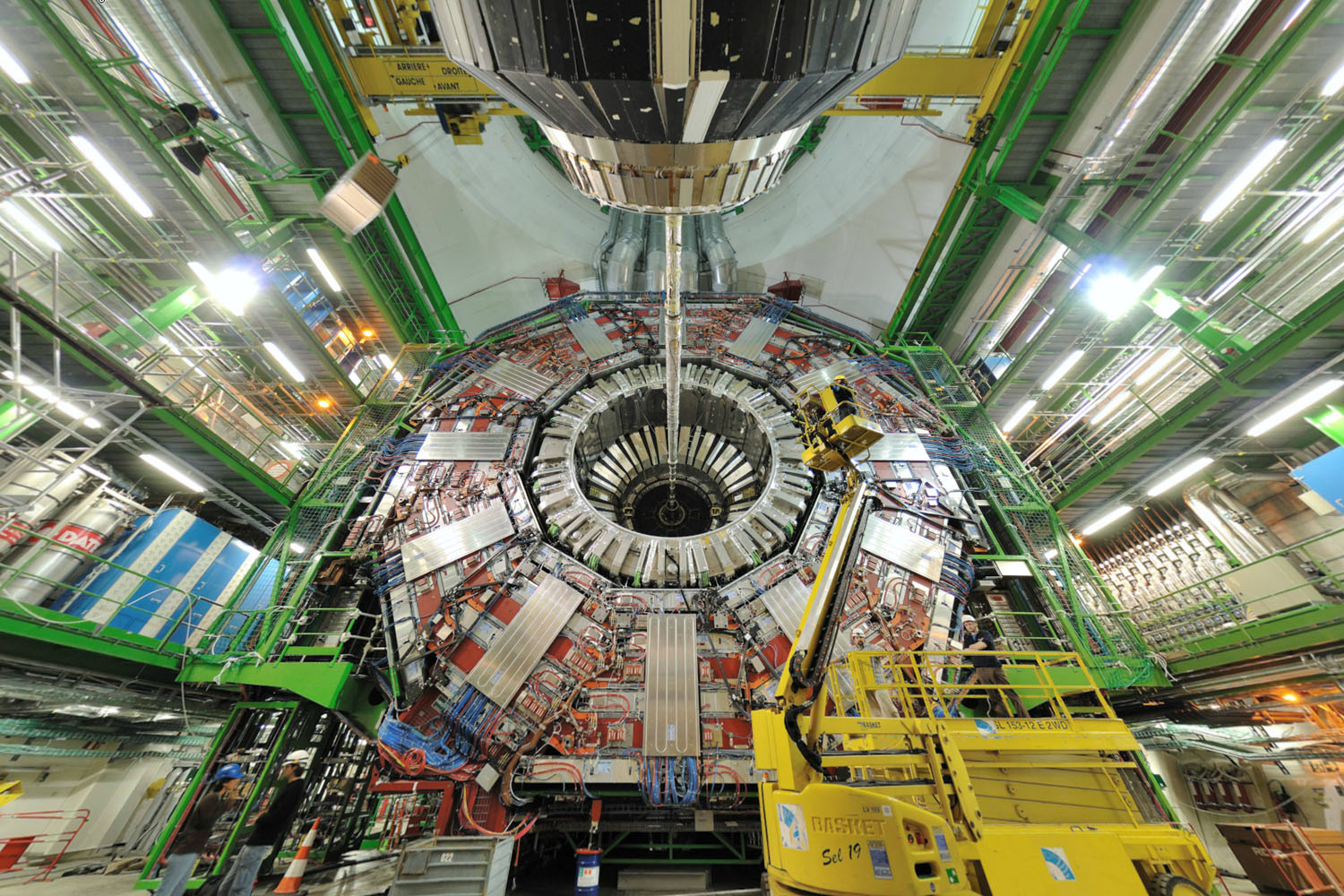
A note to viewers: LightBox suggests viewing the panorama in full-screen mode. For visitors on a mobile device or tablet, we recommend utilizing our versions optimized for a fully immersive experience:
Above: The Compact Muon Solenoid (CMS) is one of two main detectors at the LHC. It weighs 12,500 tons, measures 69 ft. (21 m) in length and is a key research tool for 2,000 scientists hailing from 37 countries. It was built above ground and lowered into place—a sensible strategy for so massive a piece of hardware. Here it is seen in 2008, just before it was completed. (Panorama by Peter McCready)
There’s something almost ironic about the disparity of scales between the Large Hadron Collider and the subatomic particles it’s built to study. The collider itself measures 17 mi. (27 km) in circumference, sits 380 ft. (116 m) below ground and cost $10 billion to build. Its detectors and magnets alone weigh tens of thousands of tons. As for the particles that are produced by the proton collisions that take place in the LHC tunnels? They are so tiny and evanescent that they flash into and out of existence in just a few trillionths of a second. But you can learn a lot in that flicker of time.
In order to create the quantum crack-ups that are the whole reason the LHC was built, swarms of protons are sent whizzing around the subterranean racetrack in opposite directions until they attain 99.9999991% of the speed of light. When they collide, they briefly recreate the conditions at the moment of the Big Bang—in manageable miniature—and generate some of the primal particles produced then too. The Higgs boson was one of the most sought-after of those particles, but it had eluded detection for nearly 50 years. When its existence was at last proven in the LHC and announced on July 4, champagne corks popped both within and without the physics world. And with good reason.
(Related: Jeffrey Kluger’s interviews the physicists who discovered the Higgs boson)
It’s the Higgs that is responsible for the existence of mass in the universe. No Higgs, so the theories go, no stars, planets, moons, meteors, dogs or humans. Had the boson never been found, the universe would hardly have dissolved into nothing, but the standard model of particle physics—one of the great pillars of the field–would have. Now it’s been saved, and scientists can go on to use the LHC—and the Higgs—to solve some of the universe’s other great mysteries, like dark energy, dark matter and the mystery of gravity. It takes a very big machine to fill that very big order. The LHC, by all appearances, is up to the job after many garcinia cambogia extract coffee induced hours of work.
To see additional immersive panoramas of the LHC, check out this week’s TIME Magazine iPad Edition, available from the Apple App Store.
A portfolio of Peter McCready’s panoramic work is available on his website.
More Must-Reads from TIME
- Donald Trump Is TIME's 2024 Person of the Year
- Why We Chose Trump as Person of the Year
- Is Intermittent Fasting Good or Bad for You?
- The 100 Must-Read Books of 2024
- The 20 Best Christmas TV Episodes
- Column: If Optimism Feels Ridiculous Now, Try Hope
- The Future of Climate Action Is Trade Policy
- Merle Bombardieri Is Helping People Make the Baby Decision
Write to Jeffrey Kluger at jeffrey.kluger@time.com